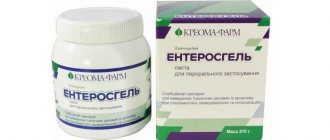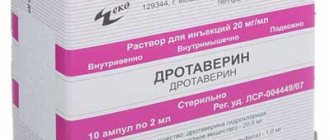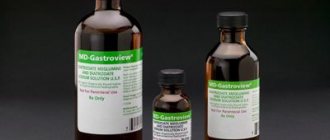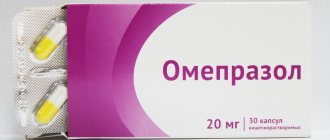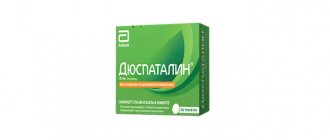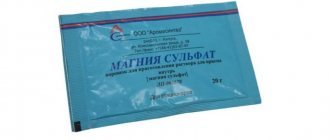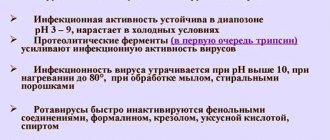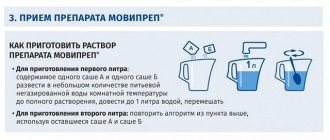pharmachologic effect
The drug Furazolidone is a derivative of 5-nitrofurforol of synthetic origin. Its maximum effectiveness is observed in the treatment of inflammatory diseases caused by gram-negative bacilli. Gram-positive cocci, protozoan microorganisms and fungi are less sensitive to this drug. Anaerobic pathogens are not sensitive to the drug.
The drug has a pharmacological effect that depends largely on the dose. At a lower dosage, furazolin will have a bactericidal effect, while at a higher dosage it will have a bactericidal effect. The mechanism of action of the drug is explained by the fact that under the influence of microbial enzymes, nitro groups, which are part of the drug molecules, are reduced to amino groups. The latter are very toxic to foreign microorganisms. By influencing bacteria, they destroy their cell membranes and also stop many processes occurring in them. As a result, parasites lose the opportunity to further grow and develop.
Reviews of the drug say that it also has minor immunostimulating properties, which are due to the ability of this drug to increase the phagocytic activity of leukocytes. The drug Furazolidone causes increased sensitivity of the human body to ethyl alcohol. For this reason, when a patient simultaneously takes these pills and drinks alcohol, side effects such as nausea and vomiting occur. Furazolidone and alcohol are incompatible, so during therapy it is necessary to completely avoid drinking alcohol.
The development of resistance to the active substance of the drug occurs quite slowly.

When taken internally, Furazolin quickly and almost completely dissolves in the intestines. Levels of the substance sufficient for a therapeutic effect remain for about six hours after the dose is taken. The drug enters the cerebrospinal fluid and its content there will be the same as in the plasma. An increased concentration of the active substance will also be observed in the intestines.
The drug is excreted from the body by the kidneys, in most cases in its original state, sometimes in the form of metabolites.
Pharmacological properties
First of all, it is necessary to consider how this medicine affects the body. This will help you understand when its use will be relevant and when it will not.
Anti-diarrhea tablets Furazolidone have the following effects on humans:
- Antibacterial. Thanks to this, the drug is actively used to treat bacterial diseases. It causes disruptions in the metabolic process of pathogenic microorganisms, which leads to their death;
- One of the key points why doctors prescribe Furazolidone for diarrhea is its high effectiveness given the fact that, unlike most antibacterial drugs, it does not suppress the human immune system.
The combination of such effects makes Furazolidone for infectious diarrhea a fairly good choice. After all, it not only destroys dangerous microorganisms, but also maintains protective functions.
Composition of Furazolidone and release form
The active ingredient of the drug is Furazolidone. In addition, the medicine contains additional components - potato starch, sucrose, lactose and polysorbate.
The release form of the drug is tablets containing 50 mg of active substance. In this photo you can see what the packaging looks like. It contains 10 tablets packed in cells. In addition, in pharmacies you can find jars made of polymer material that contain 50 tablets of furazolidone.
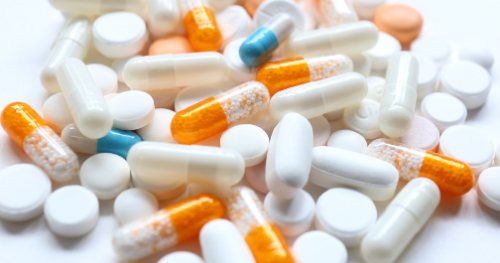
You do not need a doctor's prescription to purchase this medicine.
Analogs
An approved list of contraindications has been defined when it is not possible to use Furazolidone. In such cases, patients take analogues of the above drug. There is no absolute substitute (medicine with similar pharmacological properties) for diarrhea of this drug. There are high-quality drugs that replace Furazolidone in the fight against a specific disease. Befungin successfully copes with food poisoning, with intestinal infections and inflammation of the genitourinary system - Norbactin, Enterofuril, Macmiror, Furamag. True, the prices for the mentioned drugs are 2-12 times higher.
At home, everyone has medicines in their family medicine cabinet, the reliability of which has been tested by time, the therapeutic effect is beyond doubt. Furazolidone also belongs to similar drugs. This antibiotic will provide effective assistance in the event of an intestinal disorder, solve problems associated with the genitourinary system, and help regenerate damaged areas of the skin. The drug is suitable for children and women expecting a child. But we must not forget about the presence of a list of contraindications. It is recommended to start using the medication only after consulting with your doctor.
Furazolidone: what it helps with, indications for use
Furazolidone tablets are used for the treatment of infectious and inflammatory diseases of the skin, gastrointestinal tract, and genitourinary tract. Instructions for use, which can also be found on the manufacturer’s official website, indicate that the drug is prescribed if the patient has Giardia. In addition, indications for use include diseases such as enterocolitis, typhoid, bacillary dysentery, urethritis, cystitis, trichomoniasis, skin lesions and burns, stool disorders caused by infectious causes, including food poisoning.
Instructions for use during intoxication
Furazolidone is prescribed for a number of problems with the gastrointestinal tract that have arisen due to infection entering the body and its activity in the digestive organs.
Indications for the use of an antimicrobial drug are symptoms of poisoning with poor-quality food and intoxication of the body:
- diarrhea,
- nausea,
- vomit,
- spasms in the stomach and intestines,
- increased body temperature and headache due to intoxication.
It is necessary to take Furazolidone tablets for food poisoning, strictly following the doses indicated in the instructions. The drug has side effects in case of overdose.
You should not take the medicine for longer than 10 days. The use of the medicine is not recommended for children without a doctor's prescription. The dosage depends on the age, weight of the child and the severity of the disease. You should take the tablets after meals with plenty of water.
We recommend reading
- Instructions for use Filtrum for various intoxications
- How to take Furazolidone tablets for diarrhea
- Linex for dysbiosis: course of treatment and how many days to take
Interaction between alcohol and this drug from a pharmacy. Despite frequent warnings about the incompatibility of drugs and alcohol, there are known cases of the use of Furazolidone in the complex treatment of alcohol dependence.
Patients with problems with alcohol develop a persistent aversion to drinks after using the tablets for 10 days. This reaction is caused by increased sensitivity to alcohol-containing liquids. An addicted person experiences severe nausea, headache, vomiting, skin rashes and other unpleasant symptoms when drinking small amounts of alcohol.
Due to this reaction of Furazolidone with alcohol, the drug is classified as a sensitizing drug.
Furazolidone: instructions for use
Your doctor will calculate the dosage and tell you how to take furazolidone.
Method of application: internal. In this case, the tablet cannot be crushed; it must be swallowed whole, then washed down with plenty of water.
For the treatment of food toxic infectious diseases (dysentery, paratyphoid), the daily dosage should be from 100 to 150 mg. Depending on the severity of the disease, tablets are taken for 7 to 10 days.

To treat trichomonas urethritis, you need to take two tablets four times a day. The course of therapy lasts three days. The drug is taken after meals.
Furazolidone is very often used for giardiasis. Experts believe that this drug helps to quickly get rid of lamblia. Adults are recommended to take two tablets of furazolidone 50 mg four times a day. For the treatment of this disease in children, the dosage of the prescribed drug will depend on body weight. It is calculated as follows: 10 mg per kilogram of weight. The daily dosage is divided into equal three parts.
This remedy is also prescribed for burns and infected wounds. Only in this case will the application be local, for which the affected area is either irrigated with a solution of the medicine or a wet bandage is applied.
Indications
The tablets are intended for oral administration as part of the complex treatment of the following diseases:
- Paratyphoid (an infectious disease that affects the small intestine).
- Dysentery (an infectious disease characterized by intoxication and damage to the stomach and intestines, usually the distal colon).
- Traveler's diarrhea (a disease that affects people traveling to other climates).
- Giardiasis (protozoal invasion, characterized by dysfunction of the small intestine or asymptomatic carriage of the pathogen).
- Food poisoning (acute gastrointestinal disease that occurs after eating food).
Side effects
Such tablets belong to the category of drugs that have low toxicity, but in some cases side effects are still observed, manifested in the form of loss of appetite, abdominal pain, nausea and vomiting. The instructions for use indicate possible negative effects after using the drug, such as skin rashes, allergic reactions, itching, urticaria, Quincke's edema. To prevent undesirable consequences, the tablets used must be taken with a sufficient amount of water. In addition, during therapy it is recommended to take antihistamines and B vitamins.

With long-term therapy with this drug, especially in children under 12 months, conditions such as hyperthermia, hemolytic anemia, shortness of breath, cough, and neurotoxic reactions may develop.
Use in childhood
Furazolidone treatment should be prescribed to children with great caution, since the drug is quite toxic and can have strong side effects on a fragile child’s body.
Children should be treated with this drug under the strict supervision of a pediatrician. According to the instructions for use, Furazolidone can be given to children in the following dosage:
- contraindicated in children under 1 year of age;
- children from 1 to 3 years old should drink 0.5 tablets 3 times a day;
- children from 3 to 12 years old should take 1 tablet 3 times a day;
- Children aged 12 years and older should take 1.5 tablets 3 times a day.
According to the instructions, if an allergic reaction or other side effects occur, the drug should be stopped immediately. The tablets have an unpleasant taste and giving them to a child is a real problem; you can try crushing them into powder and mixing them into warm drinks or food.
Furazolidone: contraindications
This drug should not be taken in the following cases:
- Individual intolerance to one or more components of the drug.
- Chronic renal failure in the terminal stage.
- Lack of lactose.
If we consider the question at what age can furazolin be used, then it should be noted that this is possible after the child turns one month old.
During pregnancy, any medications must be used with extreme caution, always evaluating such therapy on the basis of benefit-harm. A doctor can prescribe furazolin only in situations where the benefits of the medicine significantly outweigh the potential danger to the child.
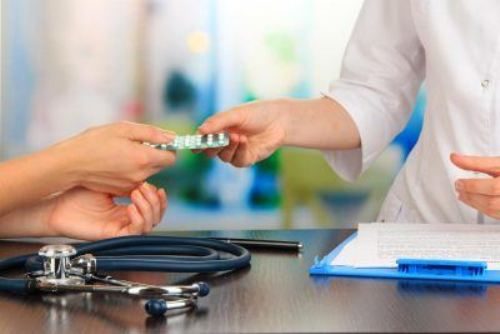
The use of this medicine should be done very carefully if you have any liver or nervous system disease. The drug is not recommended for people whose activities require increased attention and concentration.
Reviews
Elena, Novorossiysk
Furazolidone helped my little two-year-old son cope with diarrhea. A suspension was prepared from furazolidone granules, improvement occurred in the evening. This drug is now always in our home medicine cabinet.
Anastasia, Moscow
The urologist prescribed furazolidone when I came to the appointment with symptoms of cystitis. I took the pills for five days, 4 times a day. Already on the second day I forgot about the pain. I liked the drug for its affordability and speed of action.
Gregory, Arkhangelsk
I recently got burned at work and didn’t take action in time, so the affected area became infected. The clinic applied bandages with furazolidone, the treatment was successful. The visible effect came already in the morning of the second day. I recommend this drug to anyone who finds themselves in a similar situation, especially since its price is minimal.
Interaction with other medications
Before using any medicine, you need to know how it interacts with other drugs to avoid complications. If we talk about the compatibility of furazolidone with other drugs, the following should be noted:
- When furazolidone is used simultaneously with sedatives, tyramines, amphetamines, and sleep aids, an increase in blood pressure may occur.
- With alcohol-containing tinctures, blood pressure may be reduced, there is a risk of increased body temperature, as well as mental disorders.
- When used together with drugs with a saturated alkaline composition, the effectiveness of furazolidone may decrease. Conversely, products containing saturated acids help increase the effectiveness of this medication.
To prevent the occurrence of side effects due to the simultaneous use of incompatible drugs, you should consult a doctor before starting treatment.
Contraindications
The parallel use of the medicine with drugs that can affect the acid-base composition of urine leads to a metamorphosis of the process of excretion of furazolidone. As a rule, the urine changes in an alkaline direction, which means an increase in the excretion of furazolidone and a decrease in its therapeutic effect. Agents that change the components of urine to the acid side have the opposite effect: the output of furazolidone decreases, and accordingly, its pharmacological effect increases, which facilitates its use in combination with tetracycline and aminoglycosides. Suppression of hematopoietic processes is caused by using the drug together with medications that contain ristomycin and chloramphenicol. If furazolidone is used with products containing ethyl alcohol, disulfiram-like reactions are observed. The drug should not be taken together with antidepressants, amphetamines, tyramine and ephedrine, inhibitors. Their combinations cause strong hypertensive reactions.
Overdose
If furazolin is taken in doses exceeding the dosage recommended by the instructions for use, a person may experience severe liver damage, sometimes acute hepatitis.
No special antidotes have been created. In case of overdose, you will need to rinse your stomach and drink a sorbent or a salt-based laxative. If necessary, infusion treatment is prescribed to help restore water and electrolyte balance. When intoxication is very severe, hemodialysis is performed - a procedure during which toxic substances are eliminated from the body.
Application, rules, dosages
Admission rules
It is recommended to take the drug after meals to reduce irritation of the gastric mucosa. The medicine should be taken with plenty of water.
Be sure to follow the time limits for taking the medication prescribed by your doctor. It happens that improvements come earlier, but it is necessary to continue treatment until the end to avoid relapse in the development of infection.
Dosages
The dosage of the drug does not depend on the release form and remains the same. Table 1 shows dosages for various diseases for adults and children.
If you accidentally miss another dose of medication, you should take it immediately. If you remember the missed dose closer to the time of the next dose, you should not take the drug additionally.
Furazolidone dosages for various diseases
| Duration of treatment, days | Single dose, mg | Daily dose, mg | Number of appointments per day | |
| Disease | Diarrhea of various origins | |||
| Adults | 5-10 | 100-150 | 400-600 | 4 |
| Children over 5 years old | 25-50 | 100-200 | 4 | |
| Children over one year old | Daily dose/number of doses per day | 10 mg per 1 kg of child’s weight | 3-4 | |
| Disease | Giardiasis | |||
| Adults | To 10 | 100 | 400 | 4 |
| Children over one year old | Daily dose/number of doses per day | 10 mg per 1 kg of child’s weight | 3-4 | |
| Disease | Trichomonas colpitis | |||
| Adults | 7-14 | 100 mg + 5-6 g of powder in the vagina (furazolidone with milk sugar in a ratio of 1:400-1:500), in the rectum - 4-5 mg suppositories | — | 3-4 |
| Disease | Trichomonas urethritis | |||
| Adults | 3 | 100 | 400 | 4 |
Wound infections and burns are treated with a solution of furazolidone at a rate of 1:25000, in which the bandage is moistened and left on the damaged area until completely dry.
Drug for children
The medicine for diarrhea and giardiasis is fairly loyally prescribed to children over the age of one year; contraindications for furazolidone tablets include children under 1 month of age, and for granules and powders – less than 1 year. Be sure to use caution when taking this product to your child.
Constantly monitor the child and his well-being while taking furazolidone. Give rehydron to prevent dehydration and smecta (or activated carbon) which collect toxins in the children's intestines.
Reception during pregnancy and lactation
It is believed that pregnant women can take the drug, but only under the supervision of a doctor and in cases where a safer alternative is not available. A study was conducted on the effect of furazolidone on the course of pregnancy, during which it was found that the drug does not increase the possible risk of developing defects in the fetus.
Be sure to inform your doctor about your pregnancy before taking this medicine, or if you are planning to become pregnant in the near future.
Furazolidone is contraindicated during lactation. During the period of taking the drug, lactation must be interrupted.

